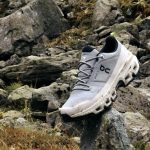Columbia Sportswear Co. saw a small increase in first quarter revenues due primarily from benefits from the weaker U.S. dollar, but there were no such benefits for the bottom line as net income slid nearly 24% for the period versus the prior-year quarter. The backlog picture wasnt particularly encouraging either as growing challenges in Europe offset gains elsewhere and apparel backlog declines offset growth in the smaller footwear business.
Changes in currency exchange rates contributed five percentage points to the 2.7% increase in net sales. Consolidated net sales in the United States inched up 0.2% for the first quarter and Canada rode a 15 point advantage from an improving Canadian dollar to post a 4.3% increase for the period. Latin America/Asia Pacific (LAAP) sales jumped 20.4% for the quarter thanks in part to a four-point gain from currency exchange rates, but EMEA region sales, which include Europe, Middle East and Africa revenues, still declined 2.8% despite a 10 point benefit from currency exchange rates. EMEA direct net sales were down 1% for the quarter and EMEA sales to distributors were down 11%, due to a shift in spring 2008 shipments into Q4 2007.
Columbia brand net sales increased 1.9% to $267.2 million, compared to $262.9 million in the year-ago period. Mountain Hardwear brand net sales increased 23.2% to $21.8 million from $17.7 million in Q1 last year. Sorel brand net sales increased 5.7% to $3.7 million, but Montrail brand net sales fell 20% to $3.9 million. Net sales of Pacific Trail brand products were said to be “insignificant” during the first quarter of both years, representing approximately $800,000 in sales in this years quarter.
Order backlogs at quarter-end were down 4.4% to $849.8 million for the combined 2008 Spring and Fall seasons. Excluding benefits of the weaker U.S. dollar, backlog was down more than 8% at the end of March. Fall backlogs were down 3.7% and would have been down roughly 8% excluding the FX rate benefit. Global Fall 2008 apparel backlog was down in mid-single-digits, partially offset by a mid-single-digit increase in footwear backlog.
U.S. Fall 2008 backlog was down in high-single-digits at period-end, which management said “primarily reflects retailers conservative buying posture” in the face of a tough retail economy. Fall 2008 backlog in the EMEA region was down in mid-single digits, despite a high-single-digit benefit from exchange rates. Management said they believe the decline in the Europe direct backlog continues to highlight the misalignment of “regional product line in relation to consumers and retailers perception of the Columbia brand.” The Fall 2008 backlog was essentially flat in Canada on a constant-dollar basis, but was up in double-digits in the LAAP region, which got a high-single-digit boost from exchange rates.
Inventory growth at the end of the quarter was attributed to planned increases in owned-retail in the second quarter, as well as stronger positions in inventory in anticipation of higher at-once orders. COLM expects to see higher fill-ins as retailers cut back future commitments.
Columbia will ramp up the opening of both outlet and first-line stores over the next five years.
The company ended the year with about 13 outlet stores in addition to the single first-line store in Portland and is on pace for 15 outlet stores this year. The stores will also dramatically increase in size as the company adds the new doors.
The average outlet store has been in the 4,000- to 5,000-square-feet range in “C” outlet malls. The newer stores will be in “A” outlet malls and average 9,000 to 10,000 square feet. The branded stores are being developed for both Columbia and Mountain Hardwear, with the Columbia stores planned to average 15,000 to 18,000 square feet, and the MHW stores 4,000 to 5,000 square feet. There are five stores planned for Columbia for 2008 and three MHW stores.
COLM sees Q2 revenues growing approximately 6%, but diluted EPS is estimated to come in at three cents per share compared to 27 cents in Q2 last year. The back half is seen as “not much better than flat” versus last year.
>>> Planning inventory growth for outlet stores? Yikes.














